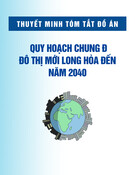
Page 1 of 12
(page number not for citation purposes)
Available online http://ccforum.com/content/11/5/230
Abstract
Progress in management of critically ill neurological patients has
led to improved survival rates. However, severe residual neuro-
logical impairment, such as persistent coma, occurs in some
survivors. This raises concerns about whether it is ethically appro-
priate to apply aggressive care routinely, which is also associated
with burdensome long-term management costs. Adapting the
management approach based on long-term neurological prognosis
represents a major challenge to intensive care. Magnetic
resonance imaging (MRI) can show brain lesions that are not
visible by computed tomography, including early cytotoxic oedema
after ischaemic stroke, diffuse axonal injury after traumatic brain
injury and cortical laminar necrosis after cardiac arrest. Thus, MRI
increases the accuracy of neurological diagnosis in critically ill
patients. In addition, there is some evidence that MRI may have
potential in terms of predicting outcome. Following a brief
description of the sequences used, this review focuses on the
prognostic value of MRI in patients with traumatic brain injury,
anoxic/hypoxic encephalopathy and stroke. Finally, the roles played
by the main anatomical structures involved in arousal and aware-
ness are discussed and avenues for future research suggested.
Introduction
Severe brain impairment, most notably persistent coma, may
follow traumatic brain injury (TBI), anoxic/hypoxic encephalo-
pathy, or stroke. Although progress in the management of
critically ill neurological patients has led to improved survival
rates [1], some survivors remain in a persistent vegetative or
minimally conscious state. Up to 14% of patients with TBI
remain in a persistent vegetative state after 1 year [2-4], and
their medical cost has been estimated at US$1 to 7 billion
per year in the USA [5]. The possibility that aggressive
medical management may lead to survival with severe brain
impairment raises ethical issues. Adapting the level of medical
care to long-term neurological prognosis is a major challenge
for neurological intensive care. The first step in meeting this
challenge is validation of tools that accurately predict long-
term neurological outcome after severe cerebral insult.
Magnetic resonance imaging (MRI) is more sensitive than
computed tomography at detecting stroke in the early phase,
subtle abnormalities related to anoxic/hypoxic encephalo-
pathy, and diffuse axonal injury (DAI) in patients with TBI. MRI
provides valuable diagnostic information, although it is
cumbersome to perform in the acute phase in comatose
patients who are undergoing mechanical ventilation. Several
MRI sequences and techniques have been used to explore
the structures, metabolism and functions of the brain. The
data supplied by these methods could be used to predict
long-term neurological outcome.
In this review we briefly describe the MRI sequences and
techniques used in critically ill neurological patients, and then
we discuss their prognostic value in comatose patients with
TBI, anoxic/hypoxic encephalopathy, or stroke. Finally, we
discuss the prognostic influences of the main anatomical
structures that are involved in arousal and awareness, and we
suggest avenues for future research.
Review
Clinical review: Prognostic value of magnetic resonance imaging
in acute brain injury and coma
Nicolas Weiss1, Damien Galanaud2, Alexandre Carpentier3, Lionel Naccache4
and Louis Puybasset1
1Department of Anesthesiology and Critical Care, Pitié-Salpêtrière Teaching Hospital, Assistance Publique - Hopitaux de Paris and Pierre et Marie
Curie University, Bd de l’hôpital, 75013, Paris, France
2Department of Neuroradiology, Pitié-Salpêtrière Teaching Hospital, Assistance Publique - Hopitaux de Paris and Pierre et Marie Curie University,
Bd de l’hôpital, 75013, Paris, France
3Department of Neurosurgery, Pitié-Salpêtrière Teaching Hospital, Assistance Publique - Hopitaux de Paris and Pierre et Marie Curie University,
Bd de l’hôpital, 75013, Paris, France
4Department of Neurophysiology, Pitié-Salpêtrière Teaching Hospital, Assistance Publique - Hopitaux de Paris and Pierre et Marie Curie University,
Bd de l’hôpital, 75013, Paris, France
Corresponding author: Louis Puybasset, louis.puybasset@psl.aphp.fr
Published: 18 October 2007 Critical Care 2007, 11:230 (doi:10.1186/cc6107)
This article is online at http://ccforum.com/content/11/5/230
© 2007 BioMed Central Ltd
ADC = apparent diffusion coefficient; ARAS = ascending reticular activating system; DAI = diffuse axonal injury; DTI = diffusion tensor imaging;
DWI = diffusion weighted imaging; FLAIR = fluid-attenuated inversion recovery; GOS = Glasgow Outcome Scale; MRI = magnetic resonance
imaging; MRS = magnetic resonance spectroscopy; NAA = N-acetyl-aspartate; TBI = traumatic brain injury.

Page 2 of 12
(page number not for citation purposes)
Critical Care Vol 11 No 5 Weiss et al.
Magnetic resonance imaging sequences and
techniques
Conventional magnetic resonance imaging
Conventional MRI relies chiefly on four sequences [6]. Fluid-
attenuated inversion recovery (FLAIR) is the primary
sequence used in neuroradiology (Figure 1). It detects brain
contusion, brain oedema and subarachnoid or intraventricular
haemorrhage, as well as the resulting ventricular dilatation or
herniation. The T2*-weighted sequence is more sensitive to
intraparenchymal blood than is FLAIR. This sequence can
also reveal haemorrhagic DAI [7,8]. The T2-weighted
sequence completes the FLAIR sequence and provides
greater detail on brainstem and central grey matter. Finally,
diffusion weighted imaging (DWI) is sensitive to random
movement of water molecules. This sequence shows cerebral
oedema and distinguishes cytotoxic from vasogenic oedema.
It is used chiefly in patients with ischaemic stroke.
Conventional MRI provides an initial evaluation of brain
lesions. However, when it is used alone it fails to predict
outcome accurately.
Magnetic resonance spectroscopy
This sequence is a noninvasive technique for assessing brain
metabolism in vivo. Proton-magnetic resonance spectro-
scopy (MRS) is most commonly used. Four main markers are
studied: the peak of N-acetyl-aspartate (NAA), an amino acid
present in neurones, which reflects the status of neuronal
tissue; creatine, found in glia and neurones, which serves as
a point of reference because its level is believed to be stable;
choline, a constitutive component of cell membranes, which
reflects glial proliferation or membrane breakdown [9]; and
lactate, a marker of anaerobic metabolism and therefore of
ischaemia [10]. As shown in Figure 2, three main pons
monovoxel profiles may be observed in patients with TBI.
Diffusion tensor magnetic resonance imaging
Diffusion tensor imaging (DTI), derived from DWI, measures
the degree and direction of water diffusion (anisotropy).
Water diffusion anisotropy reflects the integrity of white
matter tracts. Pathophysiological mechanisms that can alter
water diffusion anisotropy include DAI, effects of intracranial
hypertension and disconnection of white matter tracts.
Magnetization transfer imaging
This sequence is based on the principle that structure-bound
protons undergo T1 relaxation coupling with protons in the
aqueous phase. Saturated protons in macromolecules
exchange longitudinal magnetization with protons in the
aqueous phase, leading to a reduction in signal intensity.
Magnetization transfer imaging has been found to be
sensitive for detecting white matter lesions in several
neurological conditions [11,12].
Functional magnetic resonance imaging
Functional MRI may reveal foci of cerebral dysfunction in
regions that look structurally intact on conventional MRI.
Imaging is based on changes in the oxidative state of
haemoglobin, which reflects regional brain activation.
Functional MRI remains difficult to perform in critically ill
unstable patients and, consequently, few teams have
acquired the equipment and experience necessary to apply
this technique [13]. The few available studies conducted in
comatose patients with TBI showed a correlation between
prefrontal/cingulated cortical activation disturbation and
cognitive impairments [14,15]. However, functional MRI was
performed in these studies at a distance from the injury.
Magnetic resonance imaging findings in
specific critical neurological conditions
Traumatic brain injury
Conventional magnetic resonance imaging
MRI was first used to investigate patients with TBI in a 1986
study of 50 patients [16]. The three main findings, which have
since been confirmed, were as follows: MRI identified lesions
more frequently than did computed tomography; brain lesions
were common after TBI; and although patients who regained
consciousness rapidly had no lesions in fundamental deep
Figure 1
FLAIR and T2* sequences in a patient with an arteriovenous
malformation. (a) Axial fluid-attenuated inversion recovery (FLAIR)
sequence showing hypersignal in the left temporal lobe. (b) Axial T2*
sequence showing mild hyposignal in the same area suggestive of
bleeding. (c) Different section of the axial FLAIR sequence showing
hypersignal surrounded by hyposignal. Bleeding cannot be confirmed.
(d) Axial T2* sequence clearly showing hyposignal lateral to the left
putamen. The patient has bleeding from the arteriovenous
malformation.

Page 3 of 12
(page number not for citation purposes)
brain structures, some of them had severe cortical lesions.
Several descriptions of MRI lesions in TBI patients have been
reported since that initial study was published (Table 1)
[17-21], although few of them focused on the prognostic
value of MRI [17-20]. Conventional MRI findings that strongly
predicted outcome included DAI, total lesion burden and DAI
in the brainstem.
DAI is the most common primary lesion in TBI patients [22,23]
and may be the most common cause of poor outcome [22-24].
DAI may be ischaemic or haemorrhagic [7,8]. Ischaemic DAI is
seen as a hypersignal on DWI or FLAIR, with no abnormality on
the T2* sequence [25]. The hypersignal with DWI disappears
within about 2 weeks. Conversely, haemorrhagic DAI appears
as a hyposignal on the T2* sequence, with normal DWI
findings. It has been proposed [22] that DAI location could be
classified into the following stages: stage 1, frontal and
temporal white matter; stage 2, lobar white matter and
posterior part of corpus callosum; and stage 3, dorsolateral
midbrain and pons. With outcomes defined as Glasgow
Outcome Scale [26] scores of 2 to 3 versus 4 to 5, none of the
33 patients with good outcome in another study [27] had
haemorrhagic DAI (Table 1). DAI appears to be a major
determinant of poor outcomes, although its use as an outcome
predictor in the individual patient remains difficult. Whether the
correlation between DAI and outcome is due to the total lesion
burden or to DAI location remains debated.
In several prospective studies, lesion burden was associated
with outcome irrespective of DAI location (Table 1)
[17,19,28]. Among 40 prospectively enrolled patients with
severe TBI, lesions by FLAIR and T2*-weighted sequences
increased progressively with GOS score groups 1 to 2, 3,
and 4 to 5 [17]. Similar results were obtained in a study
comparing 42 patients with persistent vegetative state with
38 patients who recovered consciousness [19].
A number of studies have focused on the value of DAI
location in predicting outcome [19,29-31]. Brainstem lesions
in the pons and mesencephalon appear to be the most
potent markers of poor prognosis, most notably when they
are bilateral and symmetrical [18,19,29,31]. In a prospective
study conducted in 61 patients (Table 1) who were studied
within 7 days of TBI [18], all patients with bilateral pontine
lesions died as compared with 9% of patients with no
brainstem lesions. These results were confirmed by the same
group in a prospective study of 102 comatose patients [29]
using the following four-stage grading system: grade I,
lesions of the hemispheres only; grade II, unilateral lesions of
the brainstem at any level with or without supratentorial
lesions; grade III, bilateral lesions of the mesencephalon with
or without supratentorial lesions; and grade IV, bilateral
lesions of the pons with or without any of the lesions of lesser
grades. Mortality increased gradually from 14% with grade I
lesions to 100% with grade IV lesions. These findings were
corroborated by two independent studies [19,31] (Table 1).
We recently confirmed the prognostic value of brainstem
lesions in the upper pons and lower midbrain in a study of 73
patients [32]. Bilateral pontine lesions carry a high mortality
rate and predict poor neurological outcomes.
Three studies showed that corpus callosum lesions were
associated with poor outcomes [19,30,31] (Table 1). How-
ever, these lesions may merely represent markers for severe
initial injury. In addition to lesion burden, both total lesion
volume and frontal lobe lesion volume on FLAIR images
correlated significantly with clinical outcomes [30]. Never-
theless, evaluating DAI lesion volume is difficult (most notably
when the lesions are small), time consuming, cumbersome
and subject to inter-rater variability.
The presence of severe DAI and a heavy lesion burden are
associated with permanent neurological impairment.
However, these factors are difficult to use in the individual
patient, especially to distinguish GOS score 2 from GOS
score 3. In TBI patients, brainstem lesions are easily identified
by MRI. In our experience, they are associated with poor
outcomes, most notably when they are posterior and bilateral.
Available online http://ccforum.com/content/11/5/230
Figure 2
Magnetic resonance spectroscopy profile of the pons after traumatic brain injury. (a) Normal profile. The peak of N-acetyl-aspartate (NAA) is higher
than the peaks of choline (Cho) and creatine (Cr). (b) Neuronal loss profile. The NAA peak is decreased, nearly to the level of the Cr peak. The
NAA/Cr ratio is lower than in panel a. (c) Gliosis profile: increased Cho peak with no change in the Cr or NAA peak. Adapted from [17].

Critical Care Vol 11 No 5 Weiss et al.
Page 4 of 12
(page number not for citation purposes)
Table 1
Conventional magnetic resonance in traumatic brain injury
Authors (ref.)
Kampfl, 1998 Firsching, 1998 Pierallini, 2000 Yanagawa, 2000 Paterakis, 2000 Firsching, 2001 Firsching, 2002 Wedekind, 2002 Carpentier, 2006
[19] [18] [30] [28] [27] [29] [95] [31] [17]
Study design Case-control Prospective Prospective Prospective Prospective Prospective Prospective Retrospective Prospective
Sequences T1, T2 T1, T2 T1, T2, FLAIR T2, T2* T1, T2 T1, T2 T1, T2 T1, T2, T2* MRS, T2, T2*
Inclusion VS between Admission in GCS score Alive after Discrepancy Admission in GCS score GCS score Severe TBI
criteria 6 and 8 weeks coma (duration <8, coma 1 week between CT coma (duration <8 <8
>24 hours) >1 week, post- scan and >24 hours)
traumatic amnesia neurological
>4 weeks status
Number of 80 61 37 34 33 102 100 40a40
patients
Delay to MRI 6 to 8 weeks <7 days 60 to 90 days <3 weeks <48 hours <8 days <7 days 1 to 39 days 17.5 ± 6.4
Outcome GOS score Mortality Clinical GOS score at GOS score Mortality and Mortality at GOS score, GOS score
variable of (2 versus 3-5) assessment at 3 months (2-3 versus 4-5) outcome at 6 months DRS >6 months (1-2 versus 4-5)
interest at 2, 3, 6, 9 and 3, 6 and at 6 months 3 months to (mean delay: and DRS at
12 months 12 months 3 yearsb11.3 months) 18 months
Main results Independent Brainstem lesions: Volume of FLAIR Number of T2 DAI stages Bilateral pons Bilateral upper More lesions of Total burden of
factor of poor mortality rate of corpus callosum lesions correlated correlated with lesions: mortality pontine lesion corpus callosum, FLAIR and T2*
outcome on 44%. Bilateral lesions correlated with GOS score. outcome. No rate of 100%. predicts mortality basal ganglia and lesions correlated
multivariate brainstem lesions: with first clinical Number of T2* patient with good Outcome (para-)hippo- with DRS and GOS
analysis. mortality rate of evaluation. Volume lesions correlated outcome had correlated with campal lesions in score
Corpus callosum: 100% of FLAIR frontal with GOS score haemorrhagic DAI presence/absence patients with
OR 213.8 (95% lobe lesion and unilateral/ brainstem lesions
CI 14.2 to correlated with bilateral brainstem
3213.3). clinical outcome lesions
Brainstem lesions at 1 year
OR 6.9 (95% CI
1.1 to 42.9)
aTwenty patients with brainstem lesions were matched to 20 patients without brainstem lesions. bAt last examination. CI, confidence interval; DAI, diffuse axonal injury; DRS, disability rating
scale; FLAIR, fluid-attenuated inversion recovery; GCS, Glasgow Coma Scale; GOS, Glasgow Outcome Scale; MRI, magnetic resonance imaging; MRS, magnetic resonance spectroscopy;
NA, not applicable; OR, odds ratio; T2*, T2* weighted sequence; TBI, traumatic brain injury; VS, vegetative state.

Posterior brainstem lesions in the periaqueductal grey matter
are probably more relevant than anterior brainstem lesions as
predictors of poor outcomes in patients with brainstem stroke
[21] or TBI [19]. In clinical practice, treatment limitation may
deserve consideration in patients who have large bilateral
lesions in the posterior part of the pons after TBI.
Magnetic resonance spectroscopy
Several MRS studies have been conducted in TBI patients
(Table 2). Some of them were purely descriptive [33], others
assessed only the neuropsychological outcomes [34,35], and
yet others focused on global outcome as evaluated using the
GOS or Disability Rating Scale [17,36-42].
Compared with control individuals, TBI patients exhibited
decreased NAA levels, decreased NAA/creatine ratios and
increased choline levels (Table 2) in all brain regions
evaluated [35-39,41,42]. Increased lactate levels were
seldom found in TBI patients, contrary to patients with other
brain injuries [38]. The NAA/creatine ratio appeared to be the
best outcome predictor. Low NAA/creatine values correlated
with poor outcomes when they were located in the frontal
[37,39], frontoparietal [43], or occipitoparietal lobes [36,40];
the splenium of the corpus callosum [41]; the thalami [42];
the pons [17]; or a voxel including the corpus callosum, the
white matter, and part of the hemispheric cortex [38].
These studies are heterogeneous (Table 2) in terms of patient
selection, time from TBI to MRS, voxel location, method of
outcome assessment and timing of outcome assessment. For
instance, among studies of patients with TBI, one included
only patients in a vegetative state [42], another included
patients with severe TBI [17] and a third excluded patients
with early initial coma [36]. These differences in patient
selection may be associated with differences in severity of
brain oedema and in associated hypoxia and herniation,
thereby introducing bias into the interpretation of the results.
MRS findings vary greatly according to time since TBI. Four
phases may be distinguished: an acute phase, which lasts
24 hours after TBI; an early subacute phase, which spans
from the days 1 to 13; a late subacute phase, from days 14 to
20; and a chronic phase, which starts on day 21. Only two
studies included patients at the acute phase [38,40], and
only one of these included all patients before 72 hours [38].
Two studies were conducted from the early subacute phase
to the first month [17,37] and one began inclusion in the late
subacute phase but included patients up to 11 months after
TBI [43]. Four studies focused on the chronic phase; in two
of these studies, patients were included 3 weeks to 6 months
after TBI [36,39] and in the other two studies they were
included 2 months to 8 months after TBI [39,42].
Although NAA/creatine ratios were similar across studies, the
results should be interpreted with caution because experi-
mental in vitro and in vivo data suggest differences in the
underlying pathophysiological mechanisms and in the time
course of the lesions [44-46]. To interpret these results reliably,
information on NAA values over time are needed. Experiments
conducted in vitro [44] and in vivo [45,46] show an early NAA
decrease starting within a few minutes after TBI and reaching
the trough value within 48 hours. This finding explains why
spectroscopic disturbances may require 48 hours for
visualization [47]. NAA levels remain stable within the first
month after TBI, supporting the validity of MRS assessment
during the second or third week [48,49]. Later on, between
6 weeks and 1 year after TBI, NAA levels may decrease [9,37].
Partial recovery of NAA levels has been suggested and may
indicate recovery of mitochondrial function [41].
Another important factor that varied across studies was MRS
voxel location (Table 2). Voxels were located in the hemi-
sphere (the occipitoparietal, frontoparietal, or frontal lobes),
corpus callosum, thalamus, or brainstem (the pons). Because
whole brain analysis is time consuming, voxels are typically
restricted to the areas most affected by DAI, namely the lobar
white matter, corpus callosum and upper brainstem [50].
Estimation of NAA in the whole brain may improve the
prognostic value of MRS [41]. A good compromise may be a
voxel encompassing the corpus callosum, white matter and
part of the hemispheric cortex [38].
Studies also differed in their definitions of poor and good
GOS outcome groups: comparisons involved GOS score 1
to 2 versus GOS score 3 to 5 [39], GOS score 1 to 4 versus
GOS score 5 [41], or GOS score 1 to 2 versus GOS score
4 to 5 [17]. Finally, the time from TBI to outcome assessment
varied from 3 to 18 months (Table 2), further complicating
comparisons because neurological status may improve for up
to 1 year after TBI.
Although MRS has superseded conventional MRI, the combi-
nation of these two techniques may be useful [17]. Variations
in the NAA/creatine ratio over time have not been studied in a
large TBI patient population. The above-mentioned variability
in NAA levels constitutes the main limitation of this technique.
To overcome this limitation, repeated studies at intervals of 1
to 2 weeks are probably needed. In our experience, variations
in the NAA/creatine ratio are minimal in many patients. We
agree with Sinson and coworkers [41] that whole brain NAA
estimation might improve the prognostic value of MRS.
Absence of dysfunction by MRS is a valuable finding; in a
patient with normal results by both conventional MRI and
MRS, a poor outcome is unlikely. However, we have seen a
few patients with normal conventional MRI and MRS findings
who had poor outcomes, probably related to white matter
damage detected as DTI abnormalities.
Diffusion tensor magnetic resonance imaging
Initial reports of DTI in TBI patients suggest that this
technique may demonstrate alterations in white matter
connections that are missed by conventional MRI [51]. DTI
provides information on the physiological status of fibre
Available online http://ccforum.com/content/11/5/230
Page 5 of 12
(page number not for citation purposes)



![Báo cáo seminar chuyên ngành Công nghệ hóa học và thực phẩm [Mới nhất]](https://cdn.tailieu.vn/images/document/thumbnail/2025/20250711/hienkelvinzoi@gmail.com/135x160/47051752458701.jpg)






















